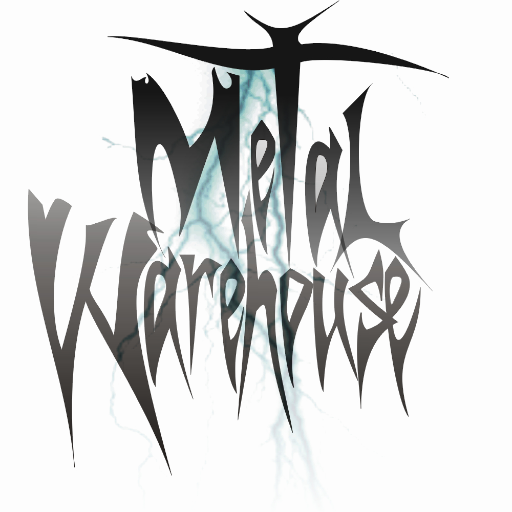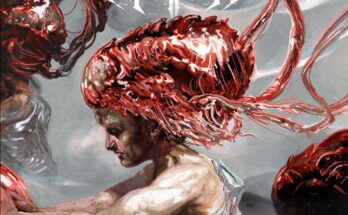SLAYER frontman Tom Araya was interviewed on the February 19-21 edition of Full Metal Jackie’s nationally syndicated radio show. You can now listen to the chat using the Podbean widget below. A few excerpts follow.
Full Metal Jackie: SLAYER is more than music to diehard fans. It’s almost a genre unto itself that represents a lifestyle to diehard fans.
Tom: “Yes. Very well said. A lifestyle. [Laughs]”
Full Metal Jackie: How does their devotion influence creative and career decisions you make as a band?
Tom: “A lot of the stuff that we do is because that’s just how we wanna do it and what we’re gonna do. We basically listen to our inner voice, because we know what we want SLAYER to be and how we want SLAYER to sound like. And then, on top of that, we’re fans of the band. So when we’re doing stuff and working on stuff, we can look at everything with the eyes of a fan; you know, we’re fans of our own band. So we step back and look and listen and think, ‘Yeah, this is cool. This is SLAYER.’ So we just refuse to change or do anything different other than just be SLAYER. You know what I mean? We don’t wanna lose our hardcore fans, but we don’t look to them to influence how we are and what we do. We just kind of just do it. I hope that doesn’t sound bad. [Laughs] You know what I mean? But we don’t look to get ideas or be influenced by the fans. It’s more like we just do what we do. And if the fans like it, great. And if they don’t, oh well. [Laughs]”
Full Metal Jackie: The latest SLAYER album is called “Repentless”, and it’s the first SLAYER LP with [new guitarist] Gary Holt [who replaced late SLAYER axeman Jeff Hanneman]. What aspects of his playing and personality made making the album a good experience?
Tom: “Wow. Gary came in one day, sat down and started recording in the afternoon — at maybe about 2 or 3 in the afternoon — and then finished about 9 — I think 9, 10 — and took a late flight home. That was about what Gary did. Gary came in, listened to what he had to do, fiddled around for a bit, and then just cranked them out. I’m trying to think of how many songs… He did solos for… He did, like, seven or eight songs, just jammed out stuff. The idea behind the guitars, or the guitars in SLAYER, with Jeff and Kerry [King, guitar], was that they would play to each other, or against each other, when they do solos. They would play to each other doing solos. And when we were finally finishing up the album, Kerry had every [intention] of asking Gary to come in and say, ‘Hey, listen. It would be great if you came in and you played solos, if we played solos against each other,’ because it would be really awkward if it was Kerry just playing all the solos on the album. So I think that was kind of to break up the vibe in the studio, as far as having another guitar player and jamming out some solos. But Gary has been an amazing addition to the band overall, period. He’s just an amazing player. And I remember sitting there listening to him jam out some stuff. [I was saying] ‘Ah, this is good. Ah, this is even better. Ah, this is great. Ah, this is great.’ And Gary was, like, ‘Let’s try it again.’ You know, and this is after a hundred million takes. And I’m, like, ‘Dude, I thought the first thing you did was great.’ [Laughs]”
Full Metal Jackie: Talking about Jeff for a second, how conscious were you of the intangible aspects of Hanneman’s playing and personality once they weren’t there?
Tom: “Kerry has a different style of writing compared to Jeff. You know, I’m just gonna leave it at that. They both have different styles of playing. And Kerry’s is very chaotic — more fast, in-your-face and chaotic stuff. And that was my concern: ‘Okay, what are these songs gonna sound like?’ You know what I mean? I like some of Kerry’s music. But he writes good songs, and lyrically, he writes great stuff too. But I was really, really kind of thinking, ‘Okay, how’s this gonna sound? What is this gonna be like? What’s the finished product gonna be like?’ So that was one of my main concerns when we started working on the record. My thought was that Jeff was definitely gonna… You can kind of hear that Jeff’s not a part of the record, you know what I mean? Because of the songwriting style that’s predominant on the album — a lot of fast stuff, a lot of riffy stuff, which is how Kerry writes stuff. So that was my concern, and, like I said, I’d be, like, ‘Man, what’s this gonna sound like?’ And then, as we worked on the record, and progressed on the record, and then doing what I do, and having a producer that would sit there and with me and listen and tell me and give me feedback. That’s what I like — having someone give me feedback and say, ‘I like how you’re doing this. I like where you’re going with this. Keep moving in that direction.’ Or, ‘You’re not convincing me. I’m not feeling it. Why don’t we just stop for today and we’ll come back tomorrow and try again.’ And that’s the kind of stuff that was helping me with what I was doing in the studio. I didn’t get a lot of that on a lot of the other records, and I think that this record, lyrically and vocally, I think was one of my better vocal records, period, because of the producer. Terry Date was just amazing how… He had an ear for melody and just paid attention, so I was really happy to have that. I mean, on previous records, Kerry would say, ‘This is how I want it done,’ and then that’s how he expects it to be done. And with this record, I kind of broke the mold on that. Because, for one, we didn’t have Jeff. And he needed to allow me to do what I need to do and what I do best. So I think that that was my concern with this record — how everything was gonna sound compared to a record that would have Jeff there. ‘Cause Jeff would come in and say, ‘Hey, that sounds great.’ Jeff would give you feedback. So that was my concern. And, like I said, Terry Date was there, stood behind me, and was there with me and listened to me and kind of guided me and allowed me to do what I did. And I really was very happy with what I did on this record. And in the end, like I said, sitting back and listening to it, overall, I was thinking, ‘Oh my god. This sounds really, really good. I really like how this is sounding.’ So the doubt about what the overall album was gonna be or sound like went out the window, because it was, like, ‘Okay, this is really good, this is SLAYER. Fans are gonna like this, because I like this. You know what I mean?”
“Repentless” was released on September 11, 2015 via Nuclear Blast. The follow-up to 2009’s critically acclaimed, Grammy-nominated “World Painted Blood” was produced by Terry Date, who has previously worked with PANTERA, DEFTONES and SOUNDGARDEN. The artwork was created by Brazilian artist Marcelo Vasco in collaboration with the band’s Tom Araya and Kerry King.
“Repentless” debuted at No. 4 on The Billboard 200, having shifted 50,000 equivalent album units in the week ending September 17.
The Billboard 200 chart ranks the most popular albums of the week based on multi-metric consumption, which includes traditional album sales, track equivalent albums (TEA) and streaming equivalent albums (SEA).
In terms of pure album sales, “Repentless” opened with 49,000 copies, marking SLAYER’s highest-charting album yet.
“Repentless” now also holds the record as the band’s career-highest chart debut in Germany (No. 1), Holland (No. 2), Australia (No. 3), New Zealand (No. 8), the U.K. (No. 11) and on the Japanese International Chart (No. 1). It bowed at No. 3 in Finland, No. 4 in Belgium, and No. 5 in both Sweden and Greece. Additionally, the album debuted in the Top 10 in France (No. 7), Italy (No. 8), Hungary (No. 9), and Japan (No. 10).
Source: Blabbermouth


